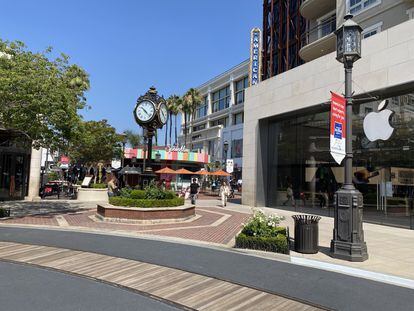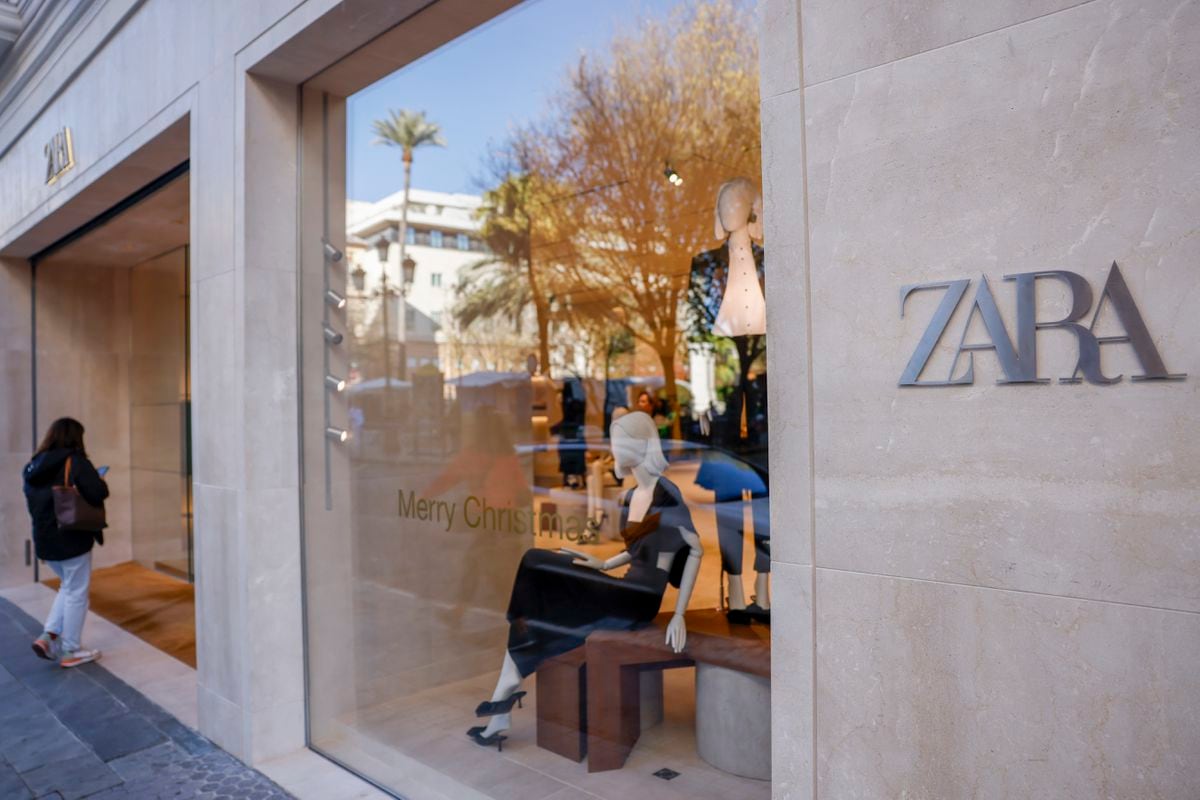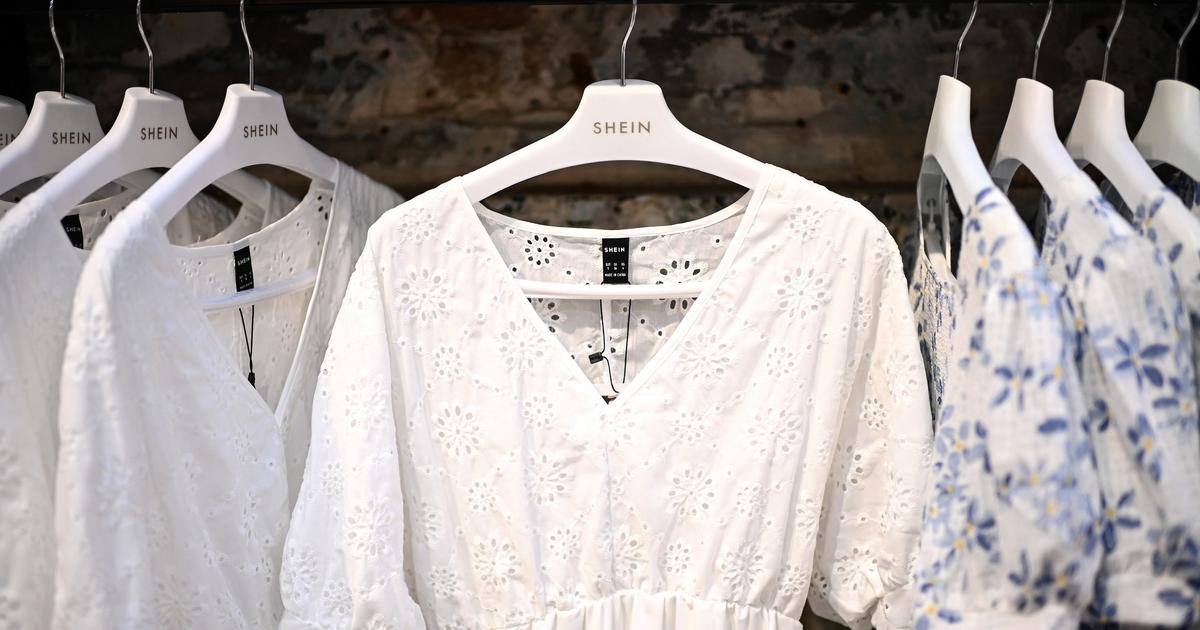"It is the future".
One of the clerks proudly explains how Amazon's first physical fashion store works, recently opened in Glendale, a suburb of the Los Angeles metropolitan area, in California (USA).
Amazon Style is a different store, with a shopping experience capable of dazzling the buyer.
An algorithm that chooses clothes for the client and magical cabinets with a secret door in the changing rooms make the difference.
The Spanish group Inditex has been a pioneer in the integration of physical and digital stores.
In some respects, the store is reminiscent of, for example, the recently opened Zara in Madrid's Plaza de España.
In others, however, it goes a step further, somehow integrating part of Amazon's logistics potential with the algorithms and experience of the physical store.
It will work?
It is not at all clear that the Amazon Style store is really the future, but that is how it works in the present.
1. Welcome to Glendale
The Amazon Style store is in the Americana at Brand mall in Glendale.
Glendale is the amazing American capital of the Armenian diaspora.
Around 40% of its nearly 200,000 inhabitants are of this nationality, according to different sources.
Tycoon Rick Caruso, billionaire real estate developer and political star of the year in California, favorite to win the elections for mayor of Los Angeles in November, built one of the most profitable shopping centers in the world here.
The Americana at Brand takes inspiration from Boston's historic Newbury Street.
Taking advantage of the mild Californian climate, it is an open-air shopping center, which Caruso has also used to promote housing.
There are lampposts with piped music, a square with pristine grass, golden statues and monumental fountains with water and light effects.
Kind of a perfect little world.
The occupancy of premises and homes is 99% and among the tenants are Apple, Tesla and Tiffany.
The Amazon store occupies a huge space at one end, next to another H&M store.
In the neighboring Glendale Galleria shopping center there is a Zara store.
2. One store and many brands
The client finds himself as soon as he enters with a huge QR code and a group of smiling and friendly employees, ready to welcome: “Is this the first time you come?”, they ask, and any of them offers to act as a guide. .
The first thing, of course, is to scan the code.
This opens the Amazon application, essential for the purchase process, as you will see.
The store has two floors, but the clothes are all on the first floor.
Upon entering, women's clothing.
In the background, those of men, with the space divided by halves between both.
There are also some beauty products, perfumes and other accessories near the two boxes.
The store is multi-brand.
Unlike the fashion leaders, such as Inditex, H&M or GAP, who only have their own brands in the store, at Amazon Style one finds clothing from Levi's, Adidas, Champion, Calvin Klein, Kendall & Kylie (the brand of the Jenner sisters), Lacoste, Lee, Nautica... Of course, a part of the space is dedicated to its own brands, mainly Amazon Essentials and also The Drop.
Some of the clothing on display is inspired by the style of social media celebrities.
A photo of the influencer appears on a panel and next to it, a set of clothes that emulates, sometimes more successfully than others, what the celebrity wears.
In general, there are few sizes and colors displayed for each model, although that does not mean that they are not available.
Last Tuesday mid-morning, during off-peak business hours, there were few customers and many shop assistants.
3. I like it, I don't like it
Each garment also has its QR code.
With the Amazon app open, a customer who sees something they like can tap on their phone and quickly scan the code.
The application shows the colors and sizes available.
After choosing the one you prefer, you can press the button to try on the garment:
Try on
.
That triggers a logistical process to book a fitting room and bring the garment there.
It gets a bit long.
On Tuesday, with the store half empty and the changing rooms free, it took more than 15 minutes from the first choice and between 5 and 10 minutes from the last.
It is not clear if the store is not able to expedite it more or if it is giving the customer time to continue shopping.
In the meantime, the application offers the customer the possibility to say what clothes he is interested in.
After the data of height, weight and sizes, the program asks the client if he wants casual, elegant, sports clothing.
After a few more questions, to fine-tune his suggestions, he shows an article or a model on his mobile: “Would you wear this?”
The client answers yes or no.
"And that?"
And so they go through photographs, as in a Tinder of clothes, until the algorithm gets an idea of what the customer may be interested in.
The program learns through trial and error and after a somewhat crazy start, in the end it ends up getting a little more right.
Apart from loose garments, the buyer can select a complete set of those that are exposed.
The code is scanned and the pants, the shirt, the jacket, the shoes and the hat are selected at once, each one of the size that has been indicated in the survey.
A while after choosing the first garments, a notice pops up on the mobile: "We have a changing room for you".
And an announcement: "Your first items (and a few more we think you'll like) are ready for delivery."
One can ask for the fitting room to be prepared or wait a bit to continue shopping.
If the client wants to move on, minutes later another notice arrives: “The fitting room 23 is ready for you”, with a button that serves as a key to open the fitting room upon arrival.
If you don't need to try on clothes, you can ask to have them brought directly to the checkout.
4. Magic testers
The changing rooms are without a doubt the most special part of the store.
Not so much because of the booking process, but because of what happens when you get there.
There are 40 dressing rooms, of which more than half are on the second floor, where there is no merchandise.
To begin with, a large touch screen with the client's name welcomes you.
On a hanger and some shelves are the items that have been requested.
But not only those.
As the app already said, there are also other clothes that the Amazon algorithm thinks you might like, based on what the customer has chosen and the items they said they would wear when answering questions about their style.
Some is actually one of the garments that were passed in that survey.
Others, items that fit.
By pressing the screen, both the articles that are in the fitting room (those chosen and those suggested) and other additional proposals appear.
Both the additional garments that have appeared in the fitting room and those proposed on the screen are the translation of the “usually bought together” or “you might also be interested in” functions that appear when buying
online
at Amazon.
If an item is pressed on the screen, new offers appear: “more similar items” or “complete your look” are the messages.
What happens if the customer tries on a shirt and it is too big for him?
Or if you like one of the suggestions?
Well, simply order one size less or that other item easily and intuitively through that screen.
Once the request is made, a message appears on the screen: “On the way”.
The cabinet with a secret door comes into play.
When the customer gets to the changing room and opens it, he sees an empty closet, but in reality it has a hidden back door.
With the cabinet closed, a red light comes on, blocking the door, and then, for theatrical effect, a white light comes on inside.
As if by magic, when you open the door, there is what was requested on the screen.
Behind it, a warehouse, a logistics and distribution system have made it possible in just three minutes.
Once the customer has decided what they want to buy, they take it with them and leave the rest in the dressing room without further ado.
Someone will come to pick it up.
5. With the palm of the hand
A glazed area of the store reveals how there is a logistics area behind it and some elevators that allow the system to operate.
As automated as the algorithm and the warehouse are, it seems that there are quite a few people working to get things to the right fitting room relatively quickly.
The customer has to go through the box to pay.
You can do it with just the palm of your hand if you have activated Amazon One, which you introduced to your Whole Foods grocery stores, Amazon Go, and Amazon Fresh.
If not, any other means of payment will work, although you cannot pay through the application.
Apart from the cash registers, near the entrance is the online order collection area, in which the system is also not automated.
6. An experiment
"It's great," said a young woman leaving the store on Tuesday after buying some clothes.
"I haven't found anything I like," lamented another woman, on the other hand.
"That system is probably not for me," said one woman.
The store is original and different, but it seems more like a test lab than a business model.
The experience is fun to try, but it doesn't seem very functional.
The suggestion algorithm can work and serve as a temptation for unplanned purchases.
However, a lot of commercial space is lost with a warehouse and logistics system that takes up so much.
In addition, waiting times delay the purchase process even when the store is empty.
A large influx of people would put the whole mechanism to the test and a lot of staff are needed.
Despite some of its progress, it lags in many respects behind Zara and other Inditex stores, which during the Pablo Isla period adopted the strategy of integrating the physical and digital store that it maintains in the new stage.
For example, in the most modern Zara, the Pay&Go system allows the customer to scan the product, pay for it with the application, remove the alarm and take it home without going through the checkout.
It is something that can be done in your Amazon Go stores, but that is not currently possible in Amazon Style.
The Zara application also allows you to locate garments within the store or automatically pick up online orders.
In the virtual queue of the testers they coincide, but in Zara the garments are worn by oneself.
And do not forget that we are talking about fashion.
Inditex makes thousands of designs and the results prove that people like them.
The product is as important or more than the shopping experience.
The Chinese Shein has become a great alternative based on product and price.
Not to mention in-store returns for
online
purchases .
Amazon Style allows it too, but there is only one store in the world.
There will be more?
It will depend on the result of the Glendale store or the scale to which Amazon wants to extend its experiment.
It is a giant of e-commerce and cloud computing, with multi-billion dollar resources and willing to lose money for years if it believes that a business model has a future.
Does this one have it?
50% off
Exclusive content for subscribers
read without limits
subscribe
I'm already a subscriber


/cloudfront-eu-central-1.images.arcpublishing.com/prisa/QHZ4AHIQQNAC3BYCHVVXLMXHQU.jpg)




